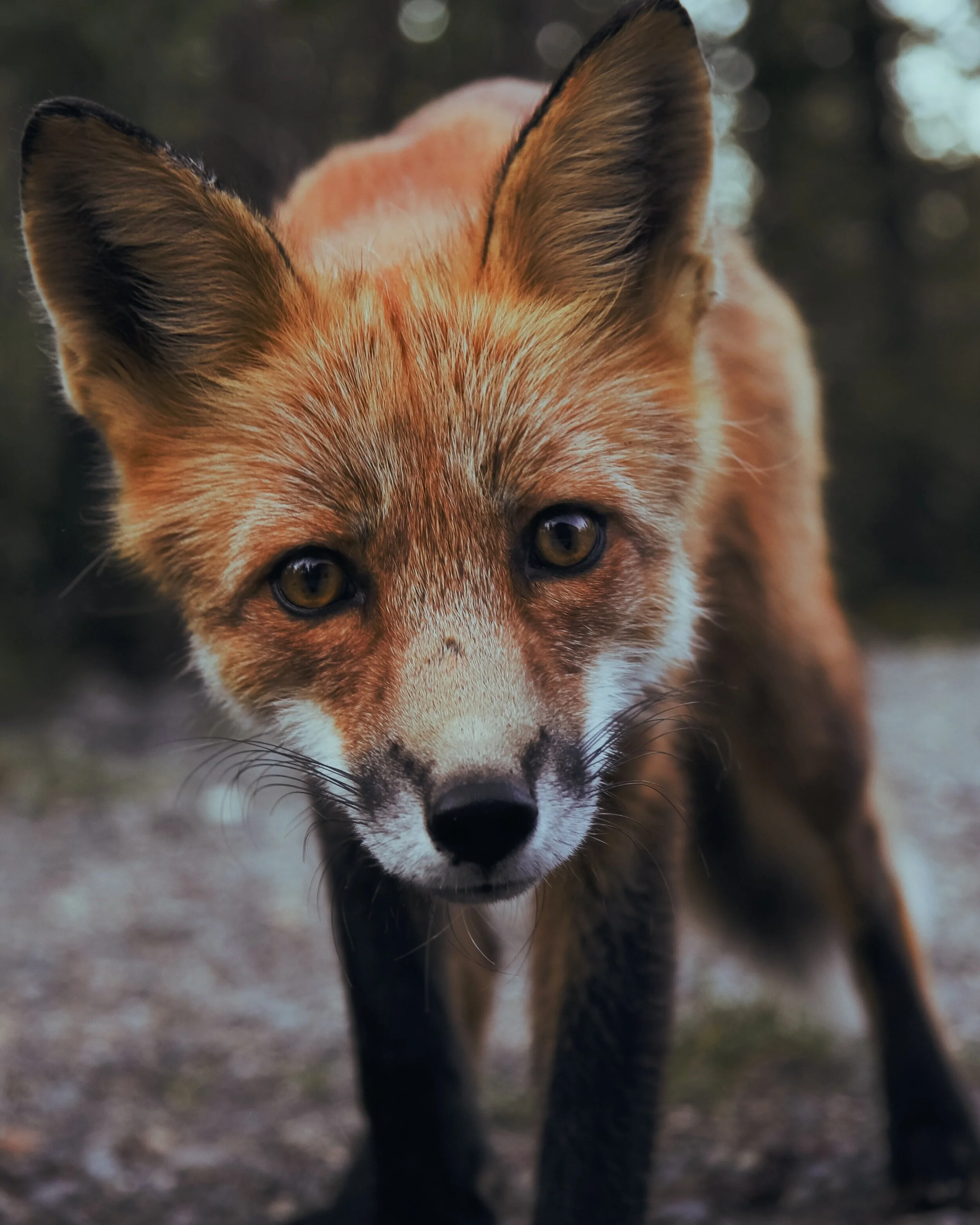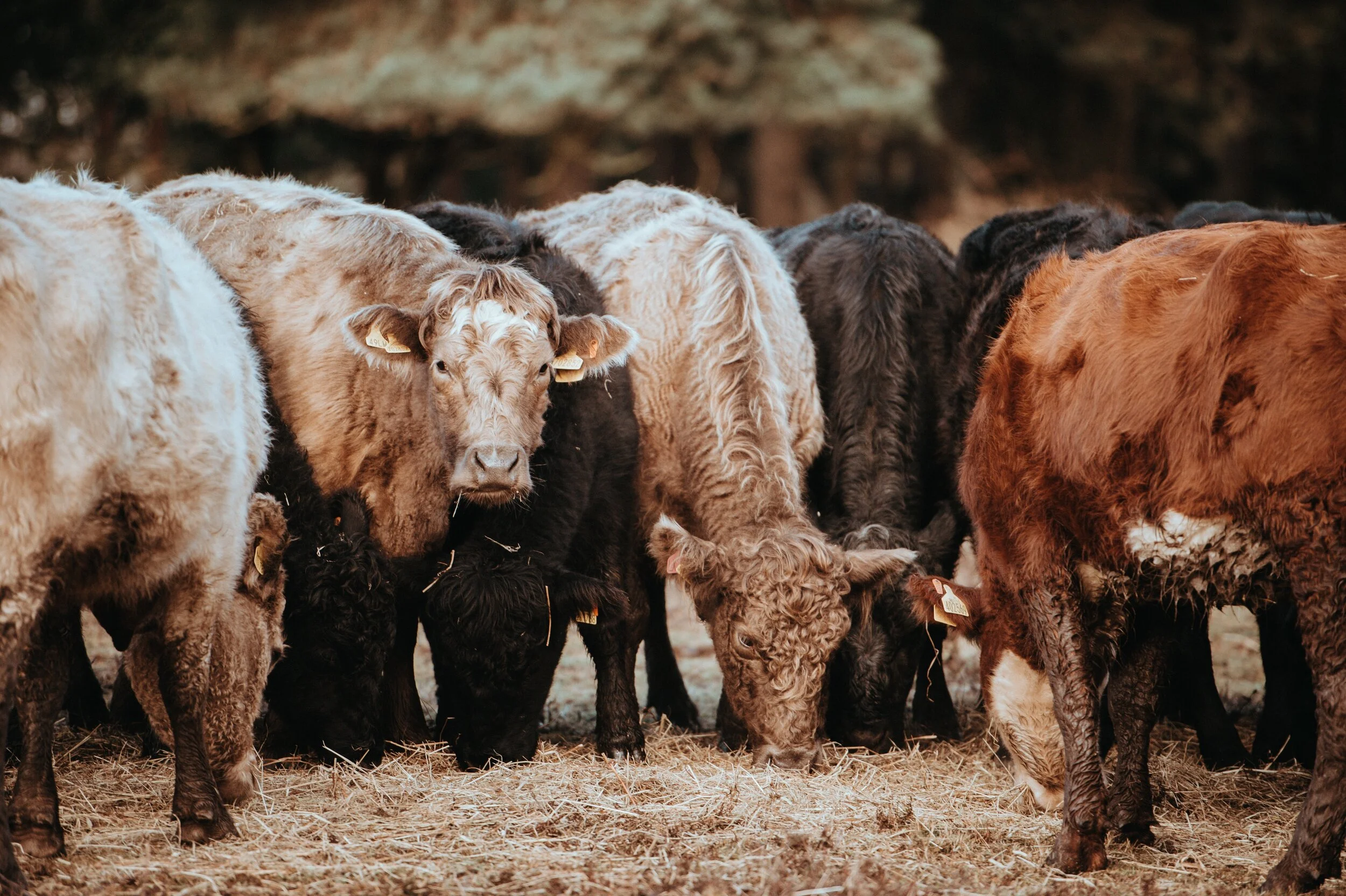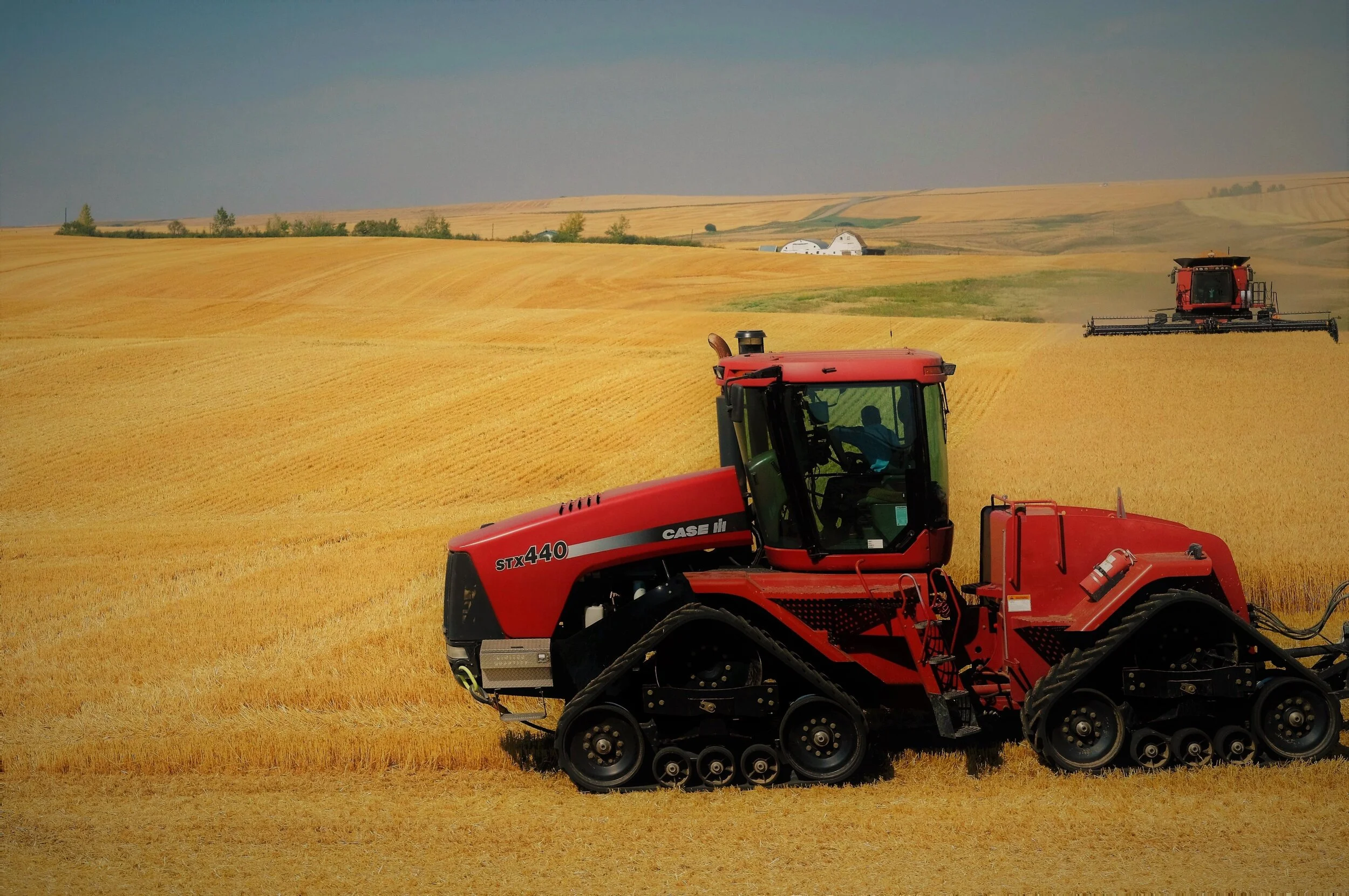Animals
No More Labs in Labs?
The US EPA plans to reduce toxicity testing on mammals by 30% by 2025, and end all such testing by 2035. The decision will spare millions of animals including dogs (yes, dogs), rats, mice, guinea pigs, and rabbits, from painful, stressful, lethal testing. The agency also announced it will increase funding for non-animal, computer-based, and in vitro test methods. www.pcrm.org
Food
The System’s Not Working
Almost one-half of the global crop production goes to feeding livestock but, on average, only 15% of the calories are passed onto humans. “If we stopped feeding our food to livestock then we’ve got all the calories we need,” says Tim Benton, Professor of Population Ecology, at Leeds University (UK). “We have to start recognizing that we can’t carry on as we are.” www.thetelegraph.com
Climate Change
“Covering Climate Now”
As a partner in CCNow, #coveringclimatenow, an unprecedented collaboration of more than 300 global news outlets to draw attention to the climate crisis, Planet Friendly News published a series of blogs in September based on the stories that were shared among the partners. Visits to www.planetfriendlynews.com more than doubled and, as a result, we’ve extended our coverage to include a special edition of this newsletter to showcase stories from Maclean’s and Newsweek.
speaking words of wisdom
“… it just so happens that we are all alive at the last possible moment when changing course can mean saving lives on a truly unimaginable scale.”
— Naomi Klein, best-selling author.
“[Animals] … are not food, they are not things, they are not owned by anyone. They are someone, they are individuals, they are sentient beings, they are unique. Living without exploiting others is more than possible, it is a moral imperative.”
— The Animal Save Movement.
Photo: Sunyu/Unsplash
perspective
Animal and Climate Activists Are Merging For Good Reason
Mounting concern for both the treatment of animals on Canadian farms and the environmental harms caused by animal agriculture is fueling an increase in activism.
Byline: Jessica Scott-Reid.
On a cold weekend this past March, animal rights activists showed up unannounced at a dairy farm in southern Ontario, live-streaming their self-guided tour of the cows’ and calves’ living quarters. “I was shocked at the number of hutches outside, each one housing a calf just days or weeks old,” says Johanna Nikoletos, an activist with Canadian group Liberation T.O. and international group Direct Action Everywhere. “Rows upon rows, hundreds of hutches, filthy and stained with manure on the inside.”
The imagery is powerful, and offers a glimpse into the magnitude of the impact animal farming has on the environment, including the vast space it occupies and the pollutants it creates. A single dairy cow in Canada, for example, can produce up to 400 grams of methane a day. This equals out to about the same emissions as a mid-sized vehicle driven 20,000 kilometres. We farm over a million dairy cows a year in Canada, and slaughter over 800 million land animals.
Mounting concern for both the treatment of animals on Canadian farms and the environmental harms caused by animal agriculture is fuelling an increase in activism and inspiring a merger of movements. Animal rights and climate activists are increasingly becoming one and the same.
Last year, global animal rights group the Save Movement created a new branch — the Climate Save Movement. “There was a recognition that the animal rights movement needs to work with environmental groups in a movement of movements,” says Toronto activist Anita Krajnc. “Roger Hallam, the co-founder of Extinction Rebellion, says ‘If we don’t work together, we are going to die together.’” Extinction Rebellion, a prolific U.K.-based environmental group, has since birthed Animal Rebellion, with chapters across Canada. In Kelowna, B.C. last month, a Rib Fest event was protested not by the usual animal rights activists, but rather vegan climate activists.
Activist groups around the world, both animal- and climate-concerned, are now engaging together in various acts of civil disobedience, including blocking off major city intersections, holding die-ins outside homes of prominent political and business figures, interrupting retailers and food producers and trespassing on farms.
Alex Cuc was part of Liberation Lockdown, a group that entered and livestreamed from an Alberta turkey farm earlier this month. She says the experience showed her first-hand how devastating farming in Canada is for both animals and the environment. “The air was filled with particles,” she describes. “Even through our N94-rated face masks [meant to remove 94 per cent of particles in the air] we were still coughing.” She claims the barns are not cleaned out for the duration of the birds’ lives — four months. “We were sitting on one to two feet of compacted litter, feces and roaches. There were decaying bird bodies as well.”
Animal waste is a prominent problem noted by activists. The most recent stat on farmed animal-waste production in Canada is from 2006, when about 200 million tonnes of livestock waste was being produced per annum; an amount far beyond that which the land can absorb. As animal farming has only increased, we can assume there is now more waste being produced, transported, stored, spread and leaked into our waterways than ever before. According to the National Collaborating Centre for Environmental Health: “Manure storage and land application tends to produce odour, greenhouse gases, microbes, and particulate matter, which can negatively impact the environment and human health.”
Photo: Annie Spratt/Unsplash
Greenhouse gas emissions are typically the topic of greatest worry in discussions about animal farming and climate breakdown. Globally, animal agriculture contributes at least 14.5 per cent — and up to, some experts believe, a staggering 51 per cent — of total GHG emissions. In Canada, animal agriculture is considered a relatively low contributor to national GHG measurements. However, the current 3.7 per cent figure is believed by some experts to be misleading, due to the exclusion of meat and dairy products imported from countries such as the U.S. and China, where contributions are much higher.
According to World Animal Protection (formerly WSPA), industrialized farms in Canada and the feed crops they are dependent upon also threaten national biodiversity, “having reduced our Tallgrass Prairie and Carolinian Forest ecosystems to miniscule patches and destroyed the habitat for several species of wildlife,” adding that “roughly half of Canada’s ‘species at risk’ are found on agricultural lands.”
Land use is another concern for activists. On a global scale, at least 83 per cent of farmable land, or 45 per cent of the world’s entire non-ice surface, is currently used to raise and feed livestock (even with about 90 per cent of the world’s farmed animals primarily confined to factory farms). And even while taking up so much space, a landmark study published in the journal Science last year found that global animal farming produces only 18 per cent of our food calories and 37 per cent of our protein. Alternatively, without meat and dairy production, researchers found that farmland use could be reduced by more than 75 per cent— an area equivalent to China, the U.S., The EU, and Australia combined — and everyone could still be fed.
Photo: Elmarie van Rooyen/Unsplash
This mounting information regarding the role that animal agriculture plays in climate breakdown has been the instigator of increased acts of non-violent, though often illegal, civil disobedience by climate and animal activists in Canada, the U.S., U.K., EU and Australia. And as a result, the agriculture community has been fighting back. In Canada, farmers have recently called for better legal protection against activists, and animal agricultural lobbyists have sent out newsletters and published trade articles about the dangers of activists and how to prepare for their sudden arrival on farms.
But as scientists continue to warn of impending climate chaos caused in great part by animal agriculture, and as animal and climate activists join forces, growing greater in number and nerve, perhaps rather than focusing on activists, animal farmers should instead focus on fixing the problem. Mitigate environmental and cruelty concerns, transition to regenerative and ethical plant crops, and be more transparent with the public.
If animal farmers don’t want activists showing up to their operations, and if slaughterhouse owners don’t appreciate activists laying on their front laws, then perhaps they should stop giving them such reason to.
No one is trespassing on Saskatchewan chickpea farms, now are they?
Jessica Scott-Reid is a Canadian writer, animal advocate and plant-based food expert. Her work appears regularly in media across Canada and the US.
This story originally appeared in www.macleans.ca It is republished here as part of Planet Friendly News’ partnership with Covering Climate Now, a global collaboration of more than 300 news outlets to strengthen coverage of the climate story.
The Best Diet to Save the Planet
Photo: Giancarlo Revolledo/Unsplash
Byline: Kashmira Gander, Newsweek.
The vegan diet is often lauded as the most environmentally friendly way to eat, but scientists have highlighted that cutting down on animal products can also help to protect the planet against climate change. A worldwide move towards plant-focused diets is "essential for meeting climate change mitigation targets," scientists wrote in the journal Global Environmental Change. But how this is achieved depends on the country.
The team, from Johns Hopkins University, Maryland, looked at the carbon and water footprints of nine plant-rich diets from 140 countries, and compared them with what is typically eaten. A total of 74 food items were considered. What are known as ruminant meats — such as cattle, sheep, and goat — had "by far" the biggest greenhouse gas footprint, with 6.54 kg (14.4 pounds) of bovine meat some 316 times more greenhouse gas intensive than pulses. Plant foods were the least intensive, on average.
In 97 percent of countries, vegan diets had the lowest per capita greenhouse gas footprint. And if all countries adopted this plant-only diet, the amount of greenhouse gases released due to food production would drop by 70 percent per person, the team concluded.
As dairy production pumps out a relatively high level of greenhouse gases, diets involving one animal product for one meal per day was more sustainable than a lacto-ovo vegetarian diet, which cuts out all fish and meat, but includes dairy products. In 64 percent of the countries studied, diets that excluded dairy had a lower greenhouse gas footprint than vegetarian diets including eggs and dairy products.
In most countries, the two-thirds vegan diet — where two out of three meals per day are based entirely on plants — was less greenhouse gas intensive than a vegetarian diet packed with dairy and eggs.
Meanwhile, diets that were high in plant foods, but that also feature animals low down in the food chain —like foraging fish, mollusks, and insects — also had relatively small water and greenhouse gas footprints, comparable to the vegan diet.
"These findings suggest populations could do far more to reduce their climate impact by eating mostly plants with a modest amount of low-impact meat than by eliminating meat entirely and replacing a large share of the meat's protein and calories with dairy," the authors wrote.
Keeve Nachman, assistant professor in the department of Environmental Health and Engineering at Johns Hopkins University and co-author of the study, told Newsweek one of the most "striking" findings was that people in low and middle income countries will need to eat more animal products to reduce hunger and developmental problems. As a result, people in high income countries will have to make "ambitious changes" to their diets to reduce their environmental impact.
Photo: Jo-Anne McArthur/We Animals
Nachman acknowledged the team did not take into account the processing, transportation, retail and preparation of the diets — but he argued the "bulk of the greenhouse gas emissions are thought to occur in the farming and production stage so this would not make a lot of difference." Asked what the average American person should be eating if they would like to help tackle climate change, he said the paper shows they could make a "significant difference" to their greenhouse gas and freshwater footprint if they cut down on how many animal products they eat.
That might include one meatless day a week, which would cut the average person's greenhouse gas emissions by 156 pounds a year. Nachman said this is the equivalent to reducing annual mileage in a typical U.S. passenger vehicle by 174 miles. "If the entire population of the U.S. cut out meat one day a week, that would save more than a trillion liters of water per year — equivalent to 43 percent of the water used to irrigate golf courses across the U.S. each year," he said. The study is the latest to point to a plant-based diet as the most environmentally friendly. However, the lifestyle is also thought to provide health benefits.
A study published in the journal Science last year mirrored these findings, concluding that cutting down on animal products by half worldwide and not buying from high-impact producers would achieve a 73 percent reduction in emissions of an entirely plant-based diet.
Lessening the consumption of oils, refined sugar, stimulants, and alcohol by a fifth would slash greenhouse gas emissions created by these products by 43 percent. "As an individual, you can have that impact today —not 20, 50 or 100 years into the future when it might be too late," Oxford University's Joseph Poore, co-author of Science study, told Newsweek at the time.
This story originally appeared in https://www.newsweek.com It is republished here as part of Planet Friendly News’ partnership with Covering Climate Now, a global collaboration of more than 300 news outlets to strengthen coverage of the climate story.







